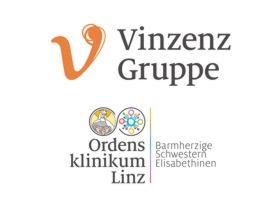Steger, Guenther G, Egle, Daniel, Bartsch, Rupert, Pfeiler, Georg, Petru, Edgar, Greil, Richard, Helfgott, Ruth, Marth, Christian, Öhler, Leopold, Hubalek, Michael, Lang, Alois, Tinchon, Christoph, Haslbauer, Ferdinand, Redl, Andreas, Hock, Karin, Hennebelle, Mathias, Mraz, Bernhard und Gnant, Michael
(2020)
Efficacy and safety of everolimus plus exemestane in patients with HR+, HER2- advanced breast cancer progressing on/after prior endocrine therapy in routine clinical practice: Primary results from the non-interventional study, STEPAUT.
Breast (Edinburgh, Scotland), 50.
pp. 64-70.
ISSN 1532-3080
Für diesen Eintrag wurde kein Volltext-Dokument angefügt.
Kurzfassung
BACKGROUND
STEPAUT, an Austrian non-interventional study, evaluated the safety and efficacy of everolimus plus exemestane in patients with hormone receptor-positive (HR+), human epidermal growth factor receptor 2-negative (HER2-) advanced breast cancer (ABC) recurring/progressing on/after nonsteroidal aromatase inhibitors (NSAIs) in routine clinical practice.
METHODS
Postmenopausal women with HR+, HER2- ABC progressing on/after NSAIs receiving everolimus plus exemestane in accordance with routine practice and the current version of Summary of Product Characteristics were eligible. Planned individual observation period corresponded to the duration of treatment until formal study end.
RESULTS
Overall, 236 patients (median age: 65 years) were enrolled at 17 sites across Austria. The median progression-free survival (mPFS) in the overall population was 9.5 months (95% confidence interval [CI]: 8.6-10.7 months). The mPFS (95% CI) in patients who received everolimus 10 and 5 mg was 9.9 months (7.3-11.5 months) and 8 months (4.7-10.7 months), respectively. The median time to progression was numerically longer in patients who had a therapy break (11.9 months, 95% CI: 10.0-14.6 months) versus those who did not have any therapy break (10.7 months, 95% CI: 8.9-12.6 months). Patients experienced grade 1 (53.7%), grade 2 (35.9%), grade 3 (9.9%), grade 4 (0.2%) adverse events (AEs). The most common AEs of any grade were stomatitis, mucositis (53.8%), rash, exanthema (29.7%), loss of appetite, nausea (28.4%).
CONCLUSIONS
Real-world safety and efficacy data from STEPAUT were consistent with results from BOLERO-2, supporting everolimus plus exemestane as a suitable treatment option for HR+, HER2- ABC recurring/progressing on/after NSAIs.
Actions (login required)

- Eintrag anzeigen


 Tools
Tools Tools
Tools